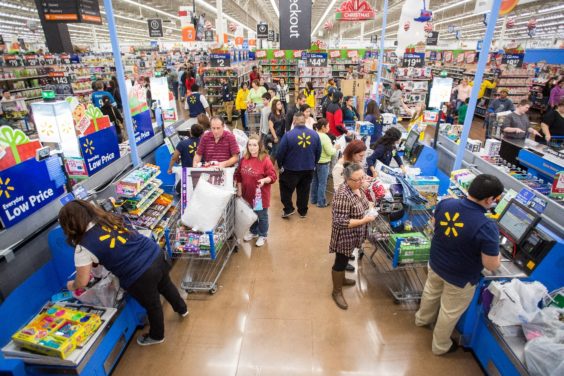Is it the prices, the crowds, the items you can’t find, the shopping cart with the wonky wheel? Or is it something else that shoppers truly dread about going to the grocery store?
A new survey finds that the worst part about grocery shopping is indeed “something else.” It turns out that shoppers dread the process of paying for their stuff so they can get out of there. So what can be done about the slow and inefficient checkout process? That’s where shoppers seem to disagree.
Those insights come from Grocery Doppio’s latest “State of Digital Grocery Performance Scorecard.”
“Shoppers delivered a clear message that grocers must improve the typical in-store checkout experience,” the report found. An overwhelming 84% of survey respondents said they are not satisfied with the speed of checkout. And 77% called checkout the “worst aspect of their in-store experience.”
No one likes to wait in a long checkout line, or deal with an unpleasant cashier, or have a bagger who squashes your bread when packing up your purchases. The traditional grocery checkout process hasn’t changed much in generations, so the complaints are familiar. But what’s the solution?
Well, it’s technology to the rescue! Grocery retailers have been trying everything from cameras to biometric data to speed up – or eliminate – the traditional checkout process. Some of it may seem a little creepy, but shoppers appear to be warming to some of the ideas.
Two-thirds of the shoppers surveyed said they’re willing to try new technologies if it helps make checkout quicker and easier. And 71% say they’re okay with sharing their data for a more convenient and faster checkout experience.
A hardcore privacy advocate might go grocery shopping without a loyalty card and pay with cash, so nothing about their purchases can be tied to them personally. But that typically means always having to go to a traditional checkout lane, with all the hassles that entails. Grocery stores in recent years have been experimenting with solutions like scan-as-you-shop apps, smart carts, and grab-and-go stores where your purchases are tracked with cameras. But all of those checkout solutions require giving up some of your privacy, your data and perhaps your likeness, in order to have your purchases linked to your account.
Grocery Doppio’s survey seems to indicate that most shoppers are okay with that. But the majority draw the line at biometrics.
Amazon announced last month that it would expand its “palm recognition service” to all of its Whole Foods Market stores by the end of this year. “Amazon One” allows you to scan your palm so the system can identify you, and charge your purchases to your account. “This means Whole Foods Market customers who choose to use Amazon One will no longer need their wallet or even a phone to pay,” Amazon explained. “They can simply hover their palm over an Amazon One device. For Prime members who link their Amazon One profile with their Amazon account, savings will automatically be applied. It’s that simple.”
That simple – and maybe just a little creepy? While Grocery Doppio survey respondents said they’re comfortable with personally-identifiable checkout technology, only 43% of shoppers said they’re okay with trying biometrics for in-store checkout. And a near-universal 94% are concerned about whether grocers will be able to secure their biometric data. If there’s a credit card breach, you can always get a new credit card. But you can’t get a new palm if a hacker gets access to your biometric data.
If you’re not sure about all these gadgets and cameras and palm-scanners, there’s always the “old-school” version of “new technology.” That would be self-checkout, otherwise known as speeding the checkout process by making you do it yourself. Nearly three-quarters of grocers surveyed said they plan to increase their use of technologies that use shopper data, with self-checkout being the most popular type of deployment. 83% said they plan to continue, expand or introduce self-checkouts in the next two years.
“Consumers have spoken,” Charlie Kaplan, Chief Revenue Officer at Grocery Doppio partner Wynshop, said in a statement. “They are absolutely willing to play ball with grocers by contributing their personal data. However, grocers must respond in kind by protecting shoppers’ personal data, and by solving the current problems in the grocery shopping experience — both online and offline.”
Checking out at the grocery store is never really fun. Technology can help make it less painful. But for many shoppers, if that means granting grocery chains access to your personal information, your purchasing data and even your physical characteristics – maybe that long checkout line isn’t so bad after all.
Image source: Walmart














